Repurposing Tirana’s Nuclear Bunkers Part I

Fearing attack from an external power, communist dictator Enver Hoxha built nearly 175,000 bunkers across Albania. These included enormous structures designed to accommodate the government during a nuclear or chemical weapons attack. Two of these bunkers are in Albania’s capital Tirana, and have been converted into fascinating museums and art galleries: BunkArt 1 and 2. The Interior Ministry Bunker that has now become BunkArt 2 is located in the middle of Tirana’s central business district.
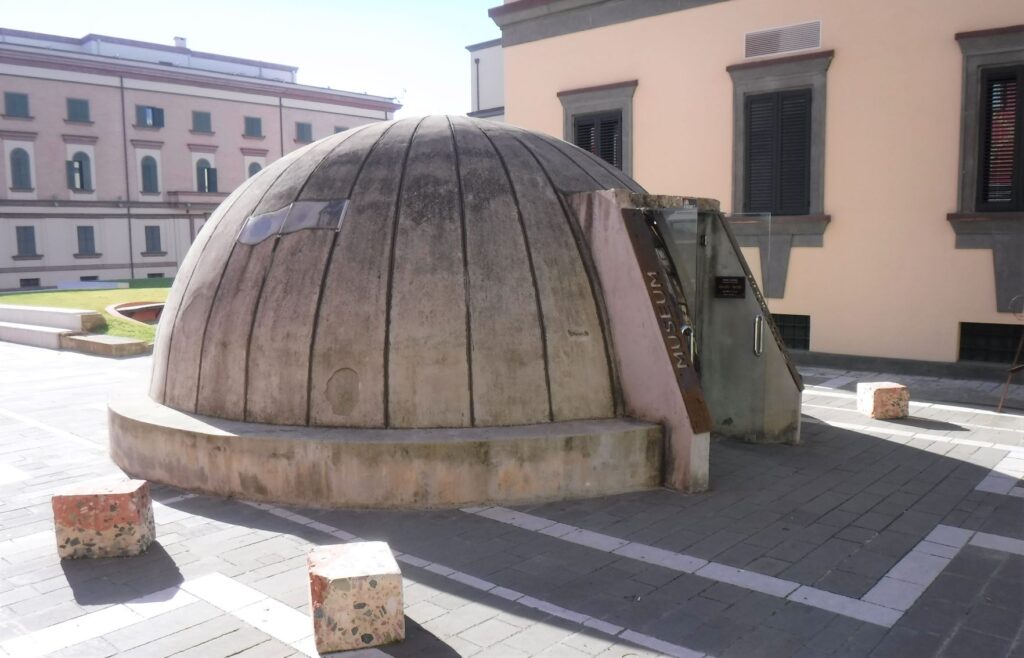
Originally, the complex was only accessible via the Interior Ministry building, with the current entry point built recently in the style of Albania’s ubiquitous hemispherical bunkers.
Inside the entry dome, the curving walls were lined with sepia-toned and black and white photographs. These are some of the thousands of Albanians thought to have posed a threat to the socialist state. I would learn more about the fate of these people as I walked through BunkArt 2.
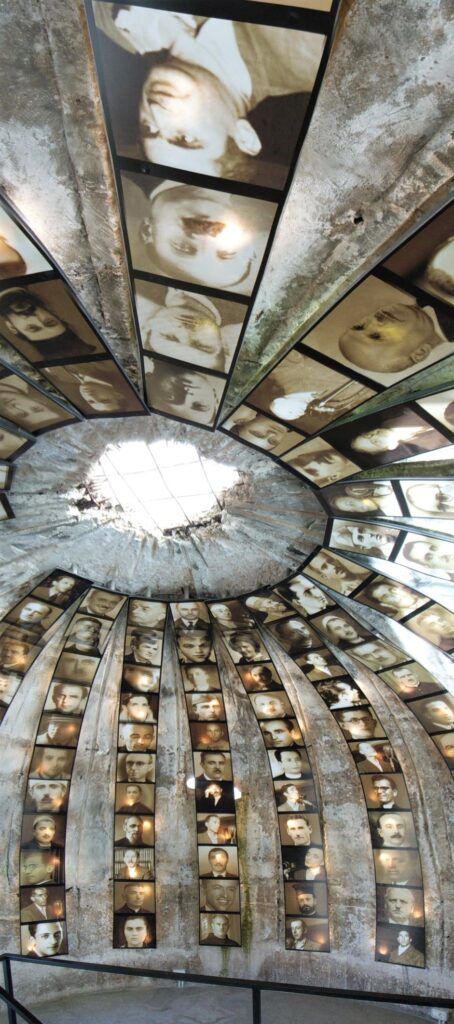
Human-built underground structures are invariably spooky places. Perhaps it is the lack of natural light, or that being underground is not our natural habitat. Maybe it is the thought of the tonnes of earth that push ceaselessly against the walls and weigh down upon the roof. In the case of the former Albanian Interior Ministry Bunker, there is the additional thought that if the complex was used in an emergency, it meant a holocaust of fire or chemical toxins had made the outside world unlivable.
I took in the grim gallery of faces, then made my way down the stairs.
After buying my ticket I entered the narrow corridor leading into the bunker complex, deep beneath Tirana city. The first of the display rooms was dedicated to the Albanian Border Forces. I remember learning about totalitarian states in history classes when I was at school. What I always found bizarre was the extraordinary lengths such regimes took not just to keep perceived enemies out, but to keep their own people in. Why, I thought, if such societies were so wonderful, did the governments have to imprison the people within them?
According to the BunkArt displays: ‘The purpose of the border forces was to prevent the escape of citizen’s abroad‘, an offence which was punishable by death, and to ‘block the entry of any illegal Albanians or foreigners‘.
Between 1949 and 1990 around 1000 Albanians were killed attempting to leave Hoxha’s socialist ‘utopia’.
‘The glorious force of the border…guarding the territorial integrity of the People’s Republic…has the great honour to stand fearless day and night in defence…of our socialist motherland’ Enver Hoxha
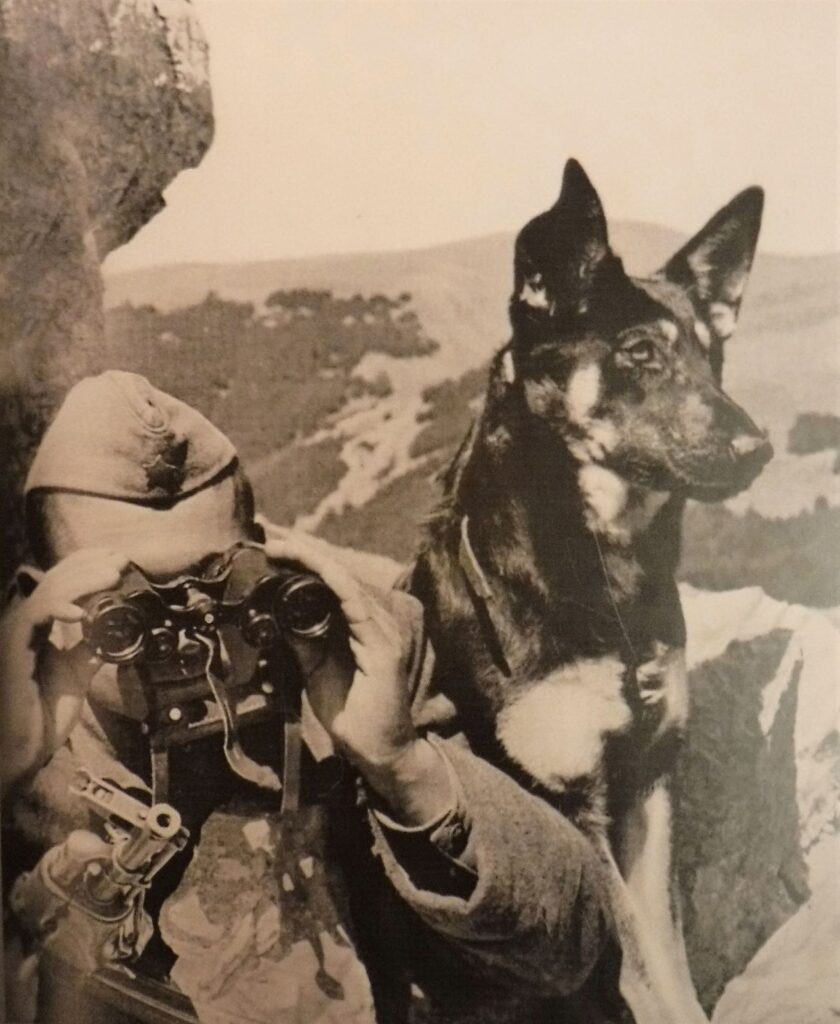
I was the only one in the Interior Ministry Bunker, and as I left the first room it felt decidedly creepy as I moved deeper into the complex.

The next series of rooms traced the establishment and activities of Albania’s Directorate of State Security, known as the Sigurimi. As part of their ubiquitous surveillance work, Sigurimi agents recruited Albanian citizens, who volunteered or were coerced, to spy on others (including members of their own family) in order to identify ‘enemies of the people’.
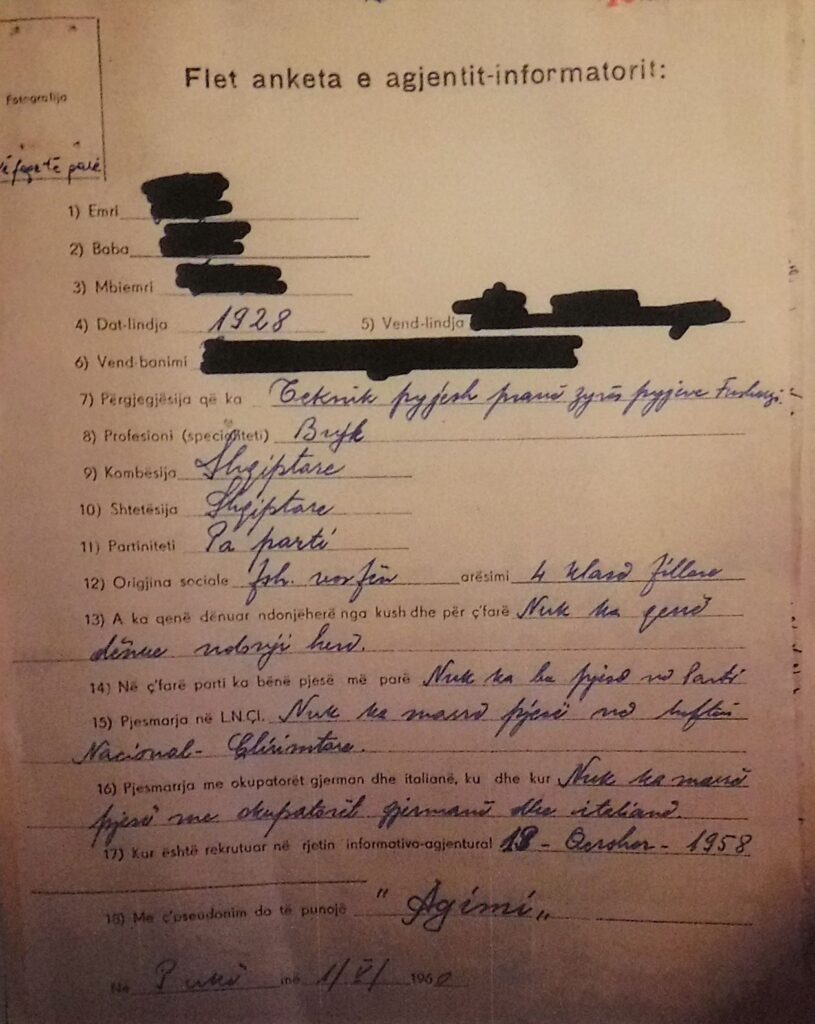
BunkArt 2 displays included the paperwork completed when a new collaborator was recruited. The collaborator’s personal information was collected, and for confidentiality they were assigned a nickname which would appear in Sigurimi documents. During the death throes of the communist regime in Albania, tens of thousands of files were destroyed in order to conceal abuses committed by the Sigurimi.
As I worked my way from room to room, I began to hear voices within the bunker. More visitors had arrived, and it soon became apparent that I wasn’t the only one finding the whole experience a little freaky. I was reading a display in the hallway when a woman came out of one of the adjacent rooms, and presumably not expecting to see a 193cm bloke lurking in the corridor, promptly screamed. She then apologised while her boyfriend dissolved in laughter.
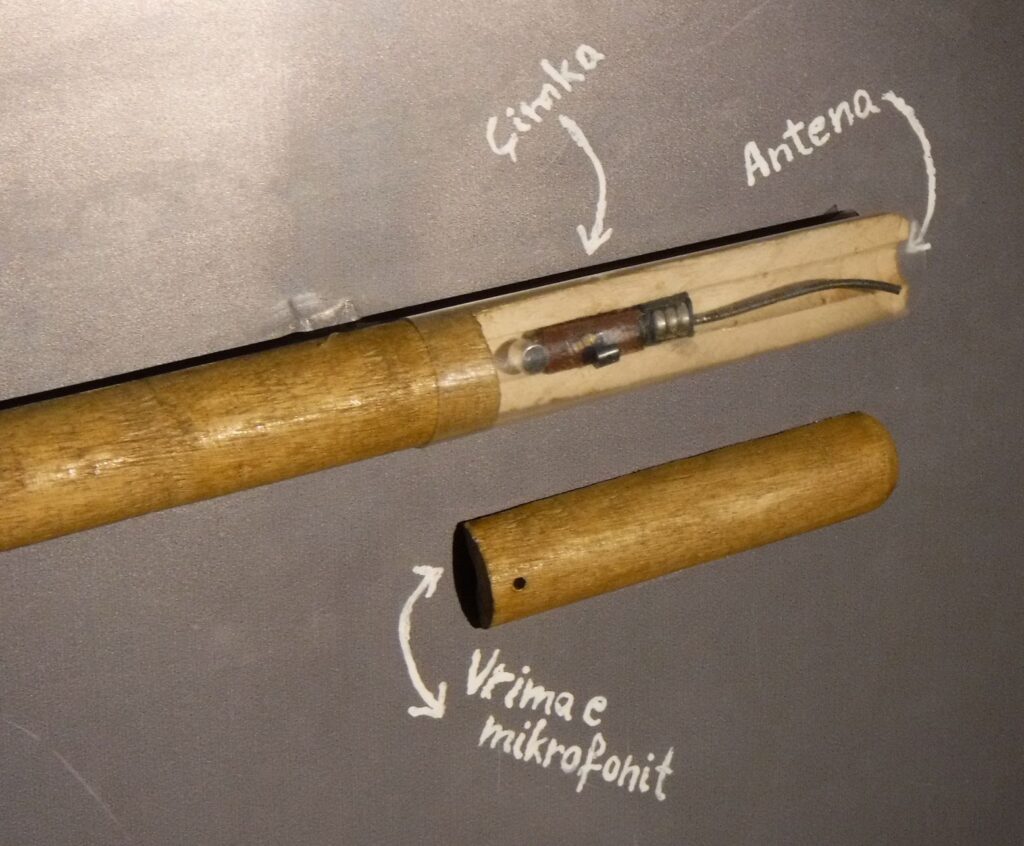
BunkArt 2 included a fascinating display of Sigurimi spycraft. This is the stuff of movies, and it was easy to get swept away in the intrigue whilst forgetting the real-world effect secret surveillance had on people’s lives.
‘Bug’ hidden inside a broom handle
Initially, Albania looked to the Soviet Union for training in espionage and the technology required to carry it out. In the early days, radio ‘bugs’, concealed in all manner of places, only had a range of around 200 metres. Therefore, Sigurimi operatives had to be present in the area to receive and record the broadcast.
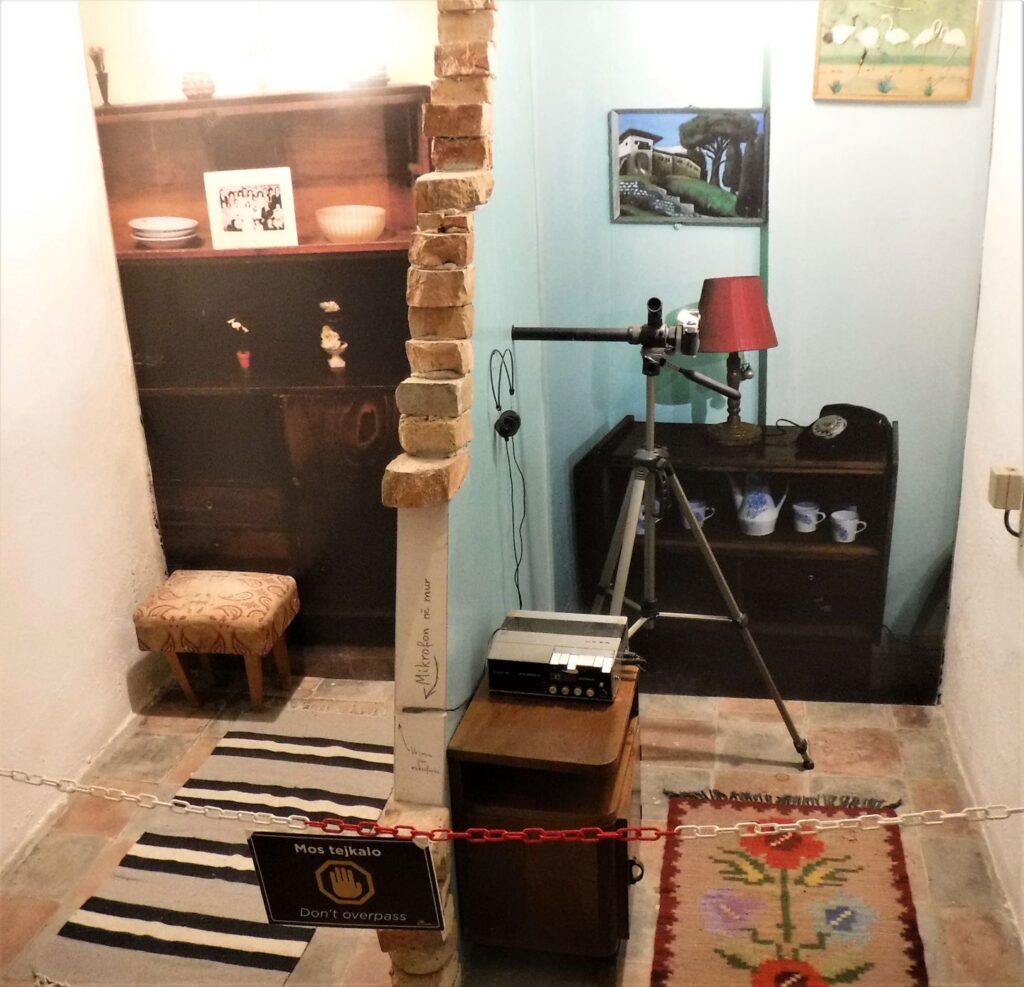
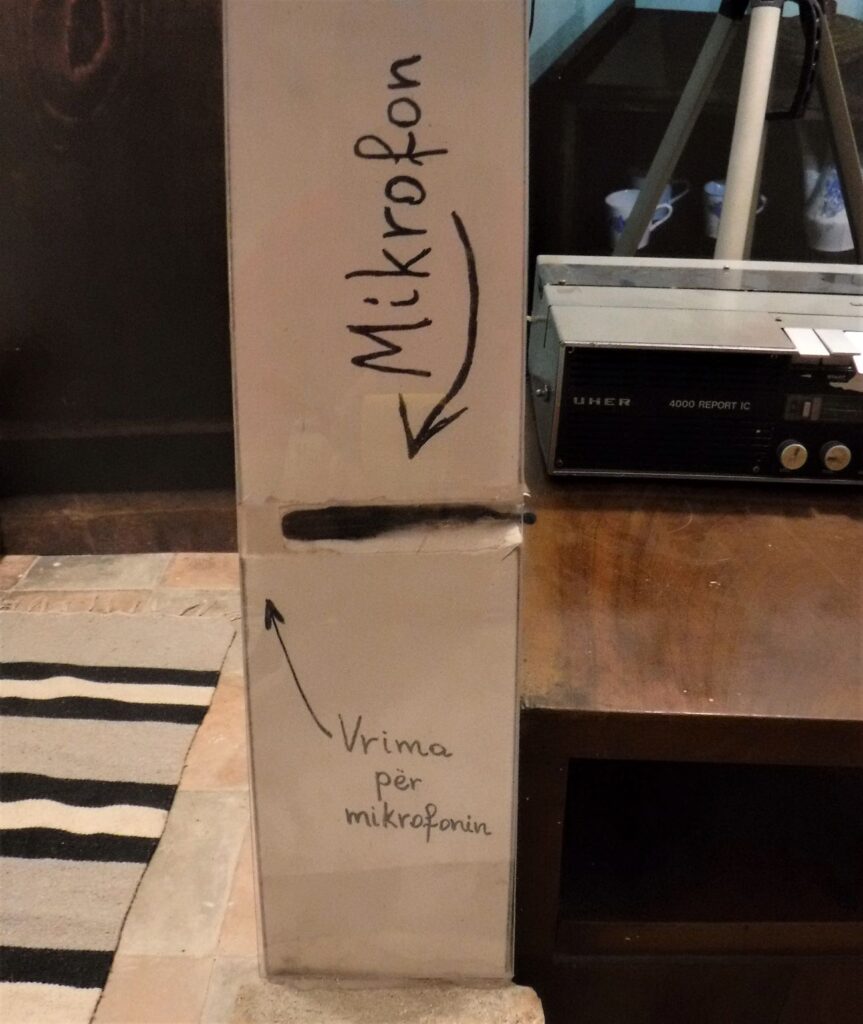
Display showing a camera and microphone installed in an adjoining room
Examples of physical surveillance protocols were described, including how to correctly observe a suspect whilst at the theatre. During the show, ‘…people around the target are observed in case they make…signs with him or exchange correspondence, expecially in the moments when the plublic applauds…’ At the cloakroom, ‘…the target can take the umbrella, or the coat of the person connected…and the other person takes his…they exchange correspondence hidden in the coat…‘
At a restaurant, agents should order ‘..after the observed target orders….If the target orders something quick, the same way acts the agent, who must also prepay to not lose time‘. Agents waiting outside take up the surveillance once the target leaves the restaurant, whilst ‘In the restaurant continues the observation of people who were sat down at the table with the suspect‘.
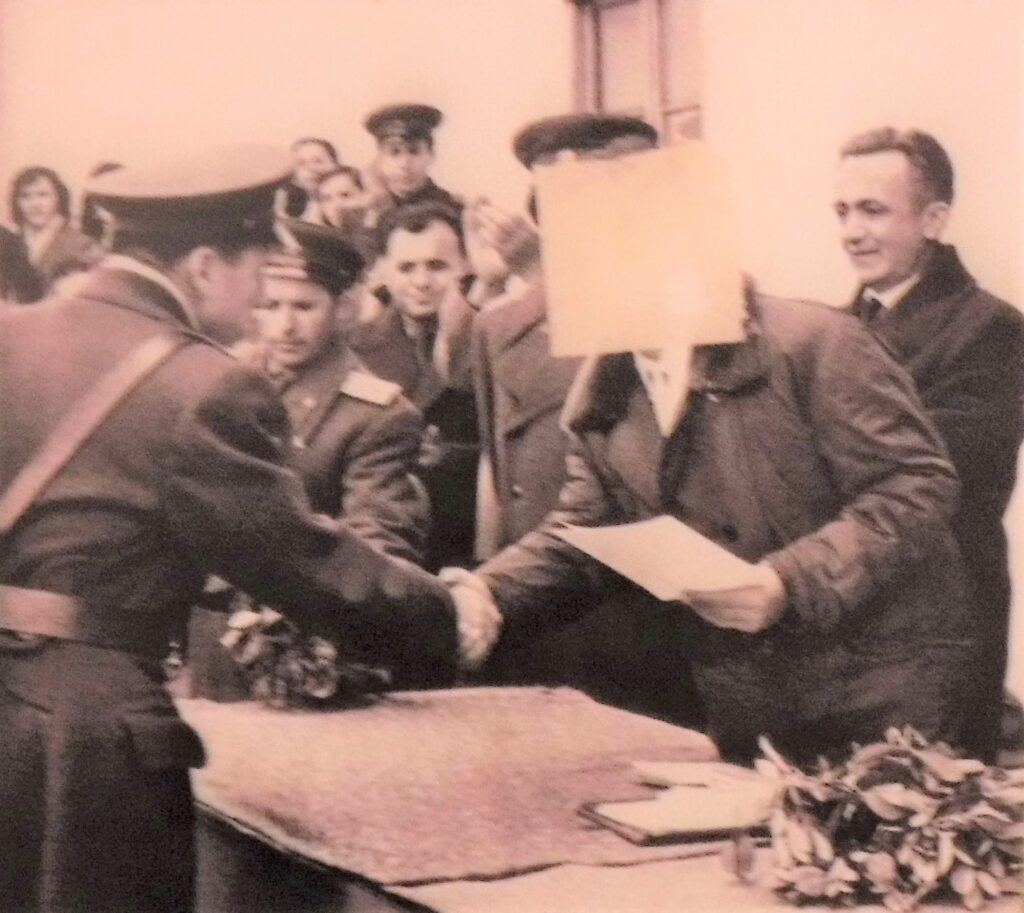
Hoxha’s government mirrored other similarly paranoid authoritarian regimes in periodically purging his own inner circle. Close allies were imprisoned and sometimes executed, and their images censored from photographs and publications. Such censorship was sometimes crude…
…and at other times marginally less crude.
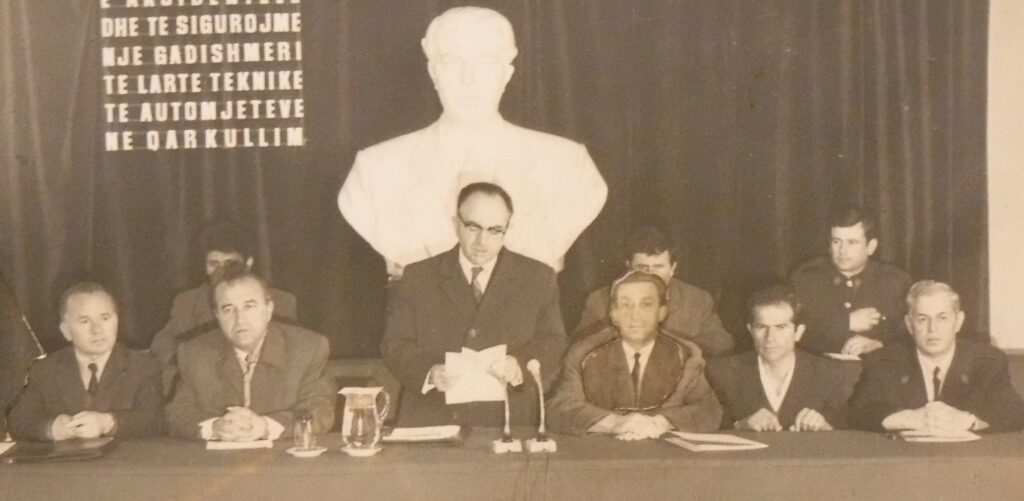
Amongst the informative displays, BunkArt 2 also preserved the Minister for Internal Affairs study and secretary’s room within the bunker complex. The Minister’s room had the typically austere Communist Bloc interior design feel, although the wood panelling and floor set it apart from the other painted concrete rooms within the shelter.
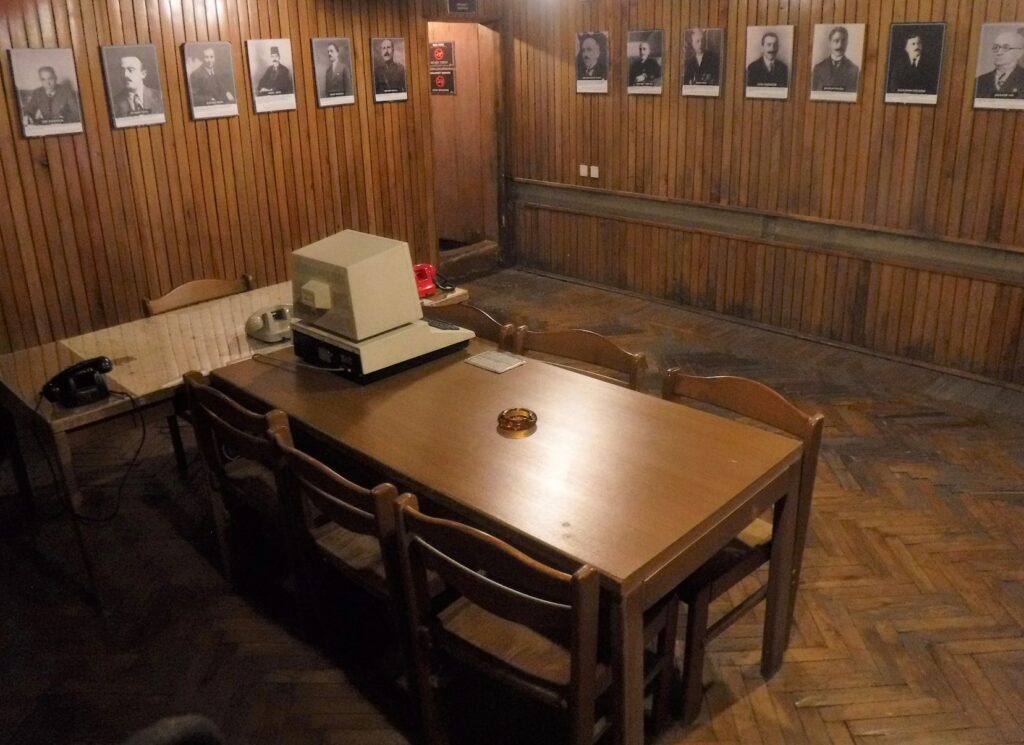
In addition to spying on Albanians, the Sigurimi were also repsonsible for the supervision of foreigners entering Albania, and numerous displays within BunkArt 2 focused upon this work. According to the exhibits, ‘During the Communist years, every foreigner that stepped in the Albanian territory received the stamp of suspected…and (was) under surveillance for as long as he stood in Albania‘. In addition to physical surveillance of foreigners by Sigurimi agents, hotels and embassies were bugged, and government operatives planted as hotel staff.
As stated by Enver Hohxa, ‘The People’s Republic of Albania is closed to enemies, spies, hippie tourists and other vagabonds…’ That definitely would have counted me out as a visitor during the communist era. The ‘Instruction No. 7’ issued in 1975 spelt out what was acceptable in the People’s Republic. ‘The border authorities do not allow the entrance of…those foreginers who, with their appearance go against the norms of the socialist aesthetics, such as men with long hair like women, with exaggerated sideburns…and women with mini and maxi skirts.’ Ok so I understand if you’re a bloke with long hair and/or big sidies you ain’t getting in. But I’m not sure why if miniskirts are banned maxi skirts are too, whatever they are.
Instruction No. 7 goes on: ‘Persons with extravagent clothing and irregular appearance…are allowed to go in the transit or waiting halls.’ There they will be informed that ‘…they may enter…only if they choose to be adjusted (to cut their hair, to dresss normally)‘. To facilitate this ‘adjustment’, ‘The Ministry of Commerce…must open local (businesses) and assign the necessary personnel, so foreigners can have the opportunity to buy regular clothes and get trimmed‘.
Moving from the relatively light relief afforded by the displays regarding dress and appearance codes deemed appropriate by the regime, the BunkArt 2 exhibits turned once again to the dark side of totalitarian Albania. Several rooms were devoted to describing trials, internments, torture, forced labour, and executions suffered by ‘public enemies’. The names of the over 6000 Albanians executed by the state over the period 1944-1991 were listed on long, hanging panels.
There is a lot more ‘museum’ than ‘art’ in BunkArt, but I guess BunkMuseum doesn’t really work as a name. However, there are art installments within the complex, including Rajmonda Avignon’s ‘Monster of Dictatorship’.
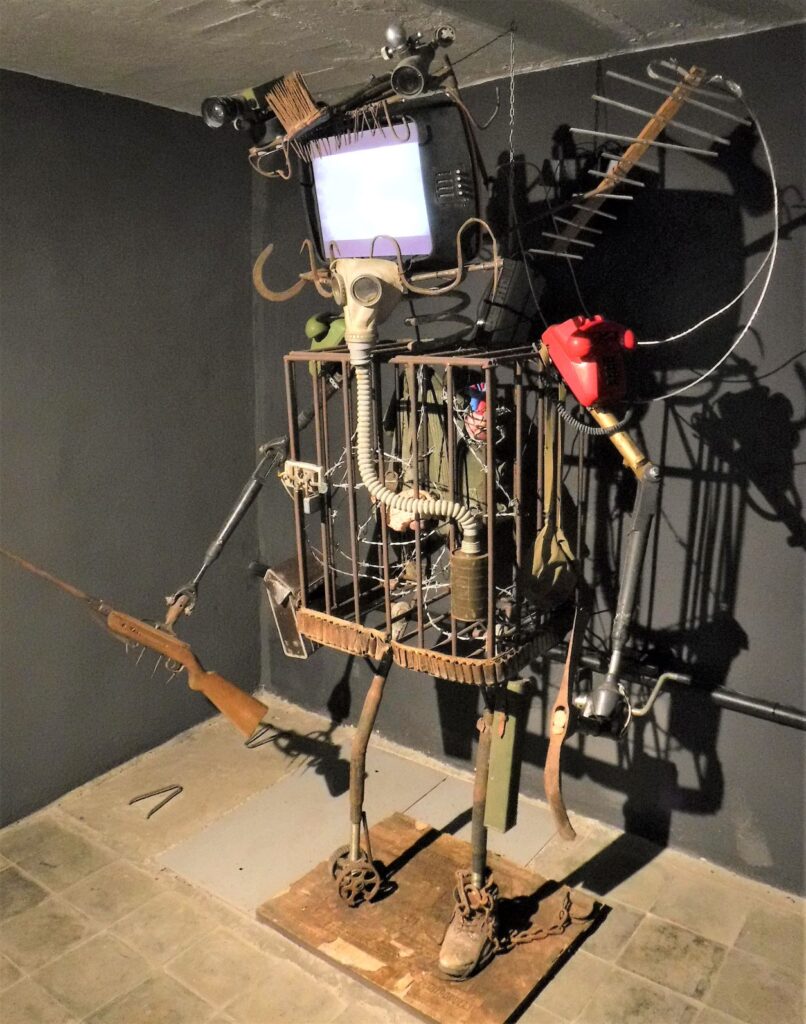
In the words of the artist: ‘I collected these pieces that belonged to the past and put them together in order to transmit feelings, emotions, fears, thoughts and also letting you know that in fact we create these monsters, applaud them, follow them, and put them on a pedastal and after these monsters feel so powerful…they build big walls, prisons, twisted strategies, as they become afraid of free speech, thoughts and diversity. Being scared even of their own shadow, the monsters are suspicious of everybody and they can not trust anyone anymore’.
Visiting BunkArt 2 was pretty intense, and after a fascinating yet disturbing couple of hours I was glad to climb the stairs and return to the fresh air and winter sunshine. On my walk back to my apartment, I wondered about the people I passed in the street. Some were, or course, too young to have lived during the Communist regime. But what of the others? What were their lived experiences? Were they bystanders, victims or perpetrators? Or a combination of the three? It was a thought that would often cross my mind during my time in Albania.
Visit the BunkArt 2 website here
If you liked this post, you may also enjoy Albania’s Bunkers, House of Leaves
Do you have a particular interest in World War I, II and the Cold War? Check out my other blog Ghosts of War. If you enjoy military history, and want to know what it’s like to visit both significant and lesser-known wartime locations today, there’s something there for you.
Leave a Reply